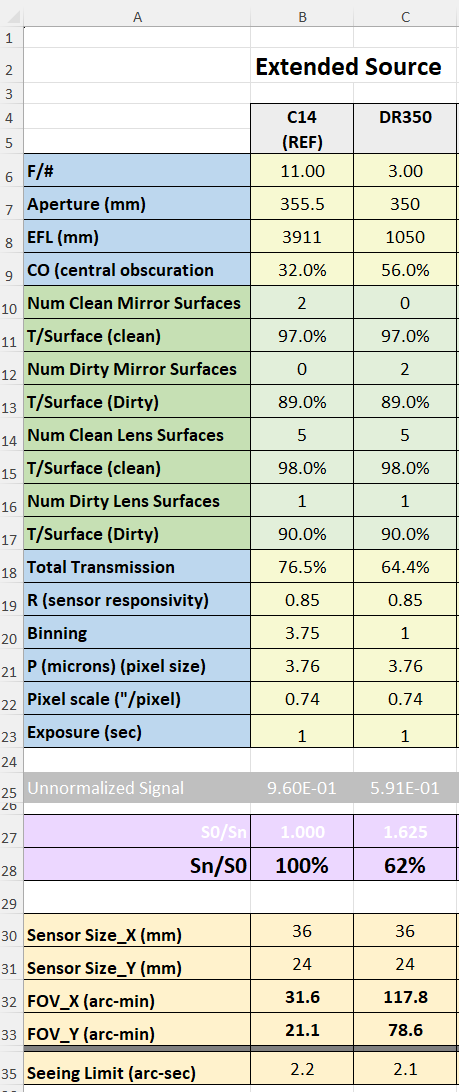John Hayes:Arun H:
But, my question is: what is the real disadvantage of using small pixel cameras with large scopes, so long as you are covering a desired FOV? You can always bin/resample in software and essentially get the same signal as you would if you'd used a larger pixel in the first place. Isn't the real disadvantage just processing and storage?
Yes, the real disadvantage is in processing and storage. I've noticed that BXT seems to do a bit better with unbanned data so in spite of starting with a lower SNR (wrt binned data) I tend to get a better looking image with sharper features from unbanned data. This all falls apart somewhat if you are talking about a telescope that would require say 4x binning. Big scopes such as the CDK1000 from Planewave with an EFL over 6m are reaching the point where they benefit from bigger pixels to better match the seeing conditions. I didn't say it in the presentation but in reality, as the size of the telescope gets larger, everything gets harder!
John
Excellent presentation @John! Lots of good information there.
BTW, I have done a bunch of testing on different targets with binning after BXT and binning before BXT, and I came to the same conclusion as you -- that running BXT on unbinned data, and then binning it afterwards has consistently led to sharper images.




